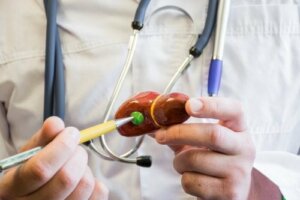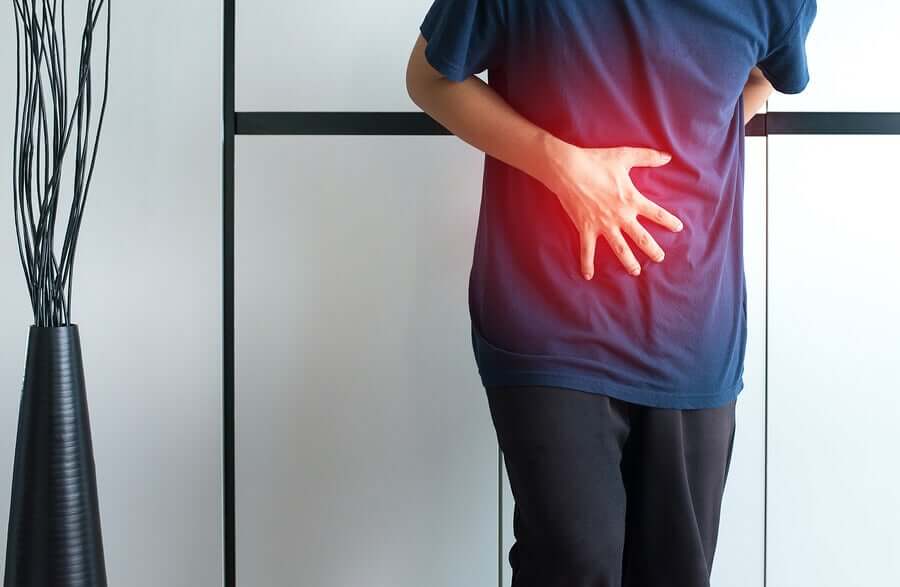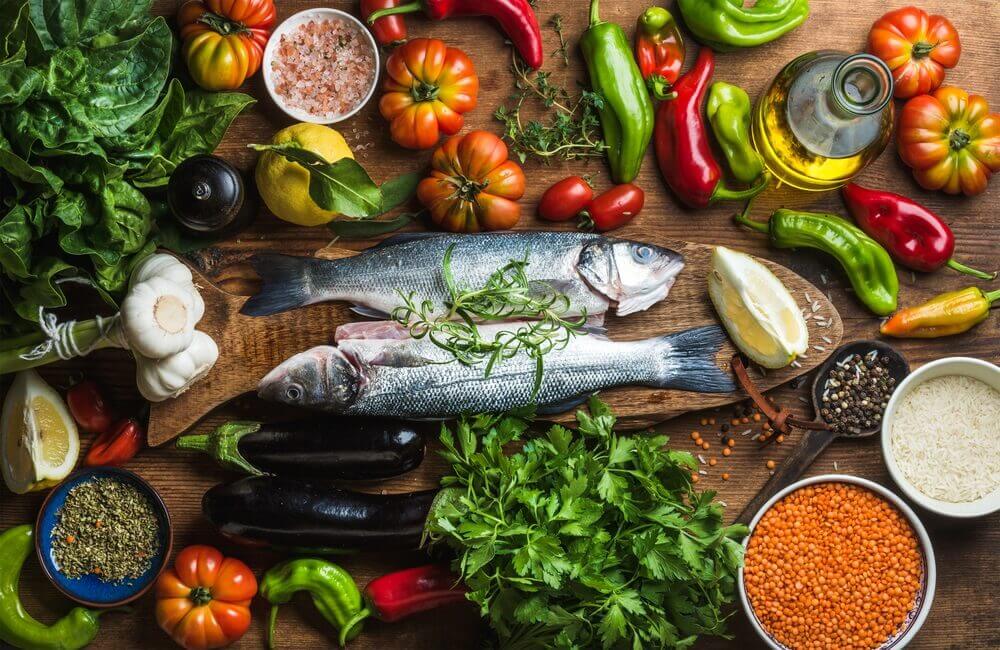Biliary Lithiasis, or Gallstones, and Nutrition


Written and verified by the nutritionist Marta Jiménez
Biliary lithiasis, also called cholestasis, is one of the most frequent pathologies of the digestive system. It’s also defined as the presence of stones in the gallbladder or in the ducts, which can cause obstructive problems. Surprisingly, the size of gallstones can vary from the size of a grain of sand to the size of a golf ball!
Most cases of gallstones are asymptomatic, meaning that there aren’t any obvious symptoms to alert to the problem. And, in symptomatic cases, biliary colic is the main symptom, although an episode of acute cholecystitis may appear. Keep reading to learn more!
Acute cholecystitis
Acute cholecystitis is the main complication of gallstones. It’s characterized by inflammation of the gallbladder along with other discomforts such as abdominal pain, nausea, vomiting, and restlessness. There are two types of stones associated with this pathology:
- Cholesterol lithiasis: it represents 75% of the cases of biliary lithiasis in the West. It forms because of alterations in the metabolism of bile acids and cholesterol.
- Pigmentary lithiasis: it’s produced by anomalies in the metabolism of bilirubin (a pigment present in the bile). It accounts for 25% of the prevalence of bile lithiasis.
What can cause gallstones?

Although it isn’t yet clear why gallstones form, there are a number of factors that contribute to the formation of gallstones. It’s a pathology that occurs in both sexes, although it has greater prevalence in women.
In cholesterol lithiasis the main causes of stone formation are the result of:
- Genetic predisposition of the individual
- Alterations in lipid metabolism
- Obesity or significant changes in weight
- Alterations in the correct emptying of the gallbladder
- Infections
- Hepatic cirrhosis
- Diet low in fiber and high in fat
- Treatment with contraceptives or estrogen therapies
On the other hand, in pigmentary lithiasis the formation mechanism is complex. It occurs due to an increase in the bilirubin content in the bile. Moreover, this is shown in a study published in 2020.
You may be interested in: Are You Really Eating Enough Fiber?
General recommendations for biliary lithiasis
The general recommendation for people with gallstones should be as follows:
- Eat a varied, balanced diet adapted to your individual needs
- Maintain a healthy weight and avoid excess weight
- Eat slowly and also chew correctly
- Avoid fasting and copious meals, as both favor biliary lithiasis
- Divide the diet into 5 daily meals
- Do moderate exercise over 40 minutes a day, at least 3 times a week
- Drink about 2 liters of water daily
- And finally, the culinary techniques we suggest are healthy styles such as roasting, boiling and papillote
In any case, a healthy diet with high vegetable content has been shown to be associated with a lower incidence of these pathologies.
Dietary treatment for biliary lithiasis
In people with biliary lithiasis, correct nutrition plays a fundamental role, since it facilitates the recovery process, favoring the rest of the gallbladder and facilitating digestive functions. Moreover, it helps prevent complications associated with this disease.
In other words, the gallbladder diet can undeniably help prevent the acute symptoms of biliary colic and relieve digestive discomforts such as gas and dyspepsia. In the case of inflammation (cholecystitis), fasting is advisable, provided that the physician indicates it.
Don’t miss out: Home Remedies for Gastritis in Children

Recommended foods
- Skimmed milk: Milk, yogurts, fresh cheese, kefir, and also curd.
- Lean meats: Lean pork parts, turkey, chicken (without skin).
- White fish: Rooster, sea bass, gilthead bream, codfish.
- Eggs: In the form of an omelet, scrambled, grilled, poached or cooked.
- Vegetables: Green leaf (chard, spinach, green beans, artichokes), red bell pepper, green bell pepper, zucchini, asparagus. The best tolerance is given cooked or mashed.
- Cereals and potatoes: Rice, wheat, corn, barley, oats, potatoes.
- Legumes: Double cooked, according to tolerance (chickpeas, peas, lentils, beans). Don’t serve with products such as black pudding, chorizo or bacon.
- Fruits: All kinds of fruits; fresh, compote, roasted.
- Fats and oils: Better tolerance to vegetable fats, such as extra virgin olive oil (preferably raw).
- Drinks: Water, defatted broths and also digestive infusions (chamomile, lime blossom, among others).
As a matter of fact, there’s evidence that the fatty acids of the omega 3 series contribute to exert a protective role with renal activity especially in pathologies that have an inflammatory process.
Limited foods
- Fatty foods: Oils, butter, margarine, lard, tallow, cream, sauces and also fried foods.
Fatty meats and sausages: Black pudding, chorizo, bacon, veal and lamb. - Bluefish and seafood: Tuna, salmon, mussels, prawns, prawns, among others. You should also avoid preserves in oil and marinade.
- Other products: Pastries, confectionery, spicy foods, cakes.
- Drinks: Coffee, tea, soft drinks and alcoholic beverages, sour fruit juices, drinks with coffee, tea or guarana extracts.
Mind your diet to avoid biliary lithiasis
So, do you have gallstones? Then consider these recommendations to support your treatment through diet. Be sure to follow your doctor’s recommendations and suggested treatments. In conclusion, visit your doctor and follow our recommendations on what to eat and what to avoid in order to solve that discomfort as soon as possible!
All cited sources were thoroughly reviewed by our team to ensure their quality, reliability, currency, and validity. The bibliography of this article was considered reliable and of academic or scientific accuracy.
- Shah R., John S., Cholestatic Jaundie, 2020.
- Martínez García RM., Jiménez Ortega AI., Salas Gonzélez MD., Bermejo Lopez LM., et al., Nutritional intervention in the control of gallstones and renal lithiasis. Nutr Hosp, 2019. 36: 70-74.
- Ciaula AD., Garruti G., Fruhbeck G., Angelis M., et al., The role of diet in the pathogenesis of cholesterol gallstones. Curr Med Chem, 2019. 26 (19): 3620-3638.
This text is provided for informational purposes only and does not replace consultation with a professional. If in doubt, consult your specialist.








